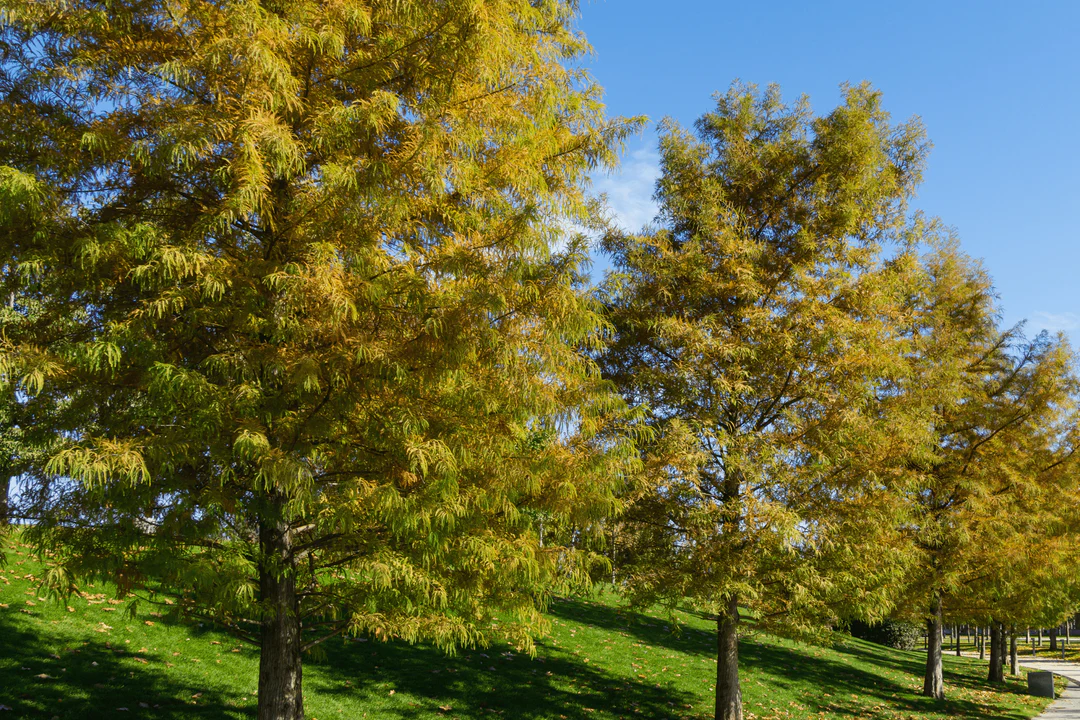Bald Cypress
- Shipping Available
- In stock, ready to ship
- Backordered, shipping soon
Taxodium distichum
Taxodium distichum, known as bald cypress, is a charming conifer that typically reaches heights of 50 to 70 feet, and on occasion can even soar up to 125 feet! While it may look like an evergreen in the summer, this lovely tree is actually deciduous, shedding its leaves in the fall, which is how it earned its "bald" nickname. You can usually find it thriving in the southern swamps, bayous, and rivers, particularly along the coastal regions from Maryland to Texas and within the lower Mississippi River valley, stretching as far north as the southeastern corner of Missouri. In the deep South, bald cypress often grows right in the swampy waters, sometimes gathering in delightful groups, with its branches gracefully draped in Spanish moss.
This remarkable tree also flourishes in drier, upland soils, where it develops fascinating knobby roots that peek out above the water when submerged. Its soft, feathery foliage starts off a lovely yellowish-green, transforming into a stunning orange or cinnamon-brown in the fall. Look out for its unique, rounded, wrinkled cones that begin as purplish-green and mature to brown, measuring about 1 inch in diameter. The wood from this tree is not only heavy and straight-grained, but it’s also resistant to rot, making it perfect for a variety of uses like crafting barrels, railroad ties, and shingles. Interestingly, its closest relative is the deciduous dawn redwood (Metasequoia), which happens to be the state tree of Louisiana.
Height: 50’-70'
Spread' 20’-45'
Bloom: N/A
Light: Full Sun
Water: Medium, High
Zone: 4, 5, 6, 7, 8, 9
Origin: Southeastern United States
Spring Shipping:
Orders are shipped within 7-10 business days. We will email you if there are expected delays.
When you order plants from our nursery, you can expect them to arrive in the best possible condition. Our team carefully packs each order using sturdy, biodegradable packaging materials.
Your plants' appearance may vary depending on the season and their current growth stage. We may cut back the leafy growth of some plants to prepare them for shipment and transplanting.
5 Gallon and Up: Any plant purchased to ship over 5 Gallons will be shipped bare root. This means we will remove the plant from its original pot, remove the soil surrounding the roots, and wrap the roots with a biodegradable plastic bag. This reduces weight and the likelihood of damage during shipping.
Once your plants arrive, it is essential to plant them as soon as possible. This will help them rebound and thrive. If you cannot plant immediately, water regularly and keep the roots off heat-conducting surfaces.
Newly transplanted plants often require more water until their roots are well established. Plan to water them 1-3 times weekly for the first few months.












